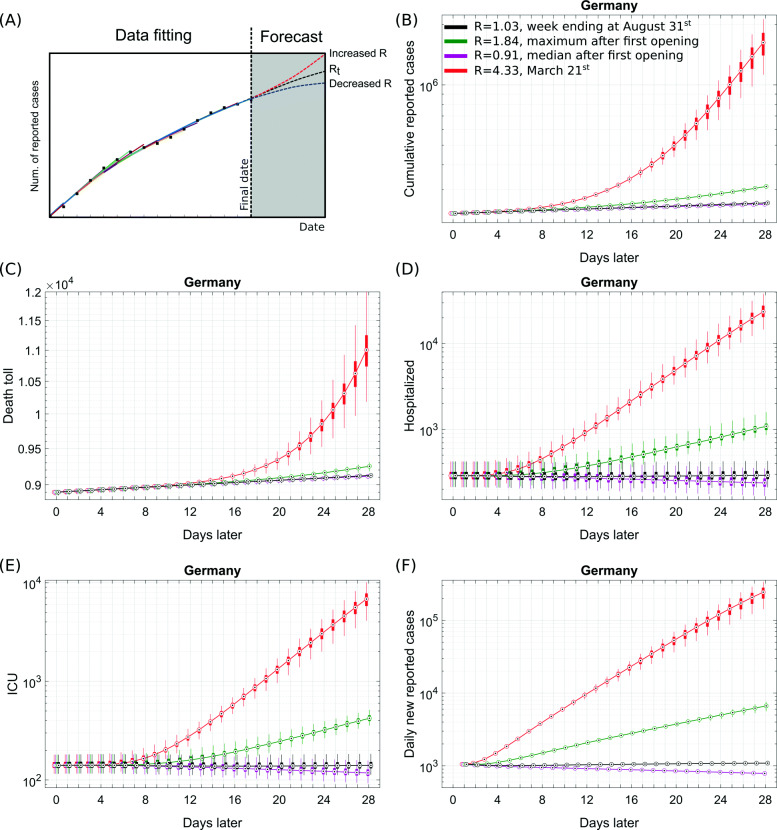Fig. 5.
Starting from the final state in Fig. 3a, a value for the transmission rate R1 was introduced based on the Rt history of the pandemic and the latest hospitalization rate (as on August 31, 2020) estimated from fitting the cumulative deaths (see the “Methods” section). Results are shown for the mean of median Rt values observed during the last week of August 2020, i.e., R = 1.03 (black); the maximum Rt values estimated during May 5, 2020, to August 31, 2020, i.e., R = 1.84 (green); the median Rt value observed over a period from May 5, 2020, until August 31, 2020, i.e., R = 0.91 (magenta); and the median Rt value observed on March 21, 2020, i.e., R = 4.33. May 5, 2020, was chosen as the first re-opening started to show its first impact from this date (see the “Results” section). α=0.22 and μ=0.2 were kept fixed. The simulations were continued for 28 days from this last time point. Box plots show the 25 and 75 percentile as well as the minimum and maximum values corresponding to 100 simulations for literature-informed parameter variation (see Table 1). a A scheme for our projections. b Cumulative reported cases. c Cumulative deaths. d Hospitalized patients in non-critical care beds (census on specific days). e Occupied critical/intensive care units (census on specific days). f Daily new reported cases. All simulation results except c are presented on log-scale. Case data before the prospective analysis are taken from [41–43]; own calculation and design

